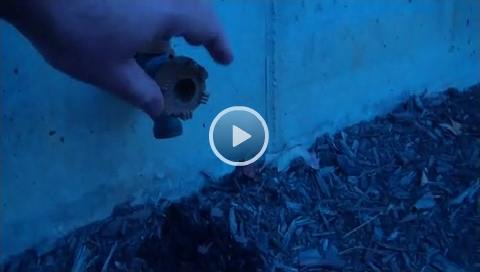Winterize Your Hose Bibb to Prevent a Basement Leak

In this video, Don Kennedy, President of ProMaster Home Repair & Handyman of Cincinnati will share with you how to winterize a hose bibb or exterior spigot to prevent a basement leak. Specifically, Don will show you where to find the spigot, the shutoff valve and what simple steps are needed to winterize the pipes. Don also shows a picture of a failed sillcock and subsequent water damage that a leak can cause.

(513) 322-2914
or Click here for ProMaster Home Repair & Handyman
What is a Hose Bibb or Sillcock?
Most Americans refer to a hose bibb or sillcock as an “exterior faucet” or “spigot.” It is simply a valve that controls your home’s water supply to a garden hose. Given that these faucets are on the exterior of the home, freeze prevention is critical to avoid bursting pipes in freezing climates.
Designs for “frost-free” hose bibbs and sillcocks have been around for many years. These units significantly reduce the risk of a pipe failure or basement leak from freezing. But they aren’t perfect and require the same winterization as a standard hose bibb.
For the purpose of this discussion, we’ll assume that your home has a frost free sillcock, as this is common with most homes built today. Should your home have an older style hose bibb, the same procedure applies for winterization—albeit more crucial since these simple exterior faucets have no frost protection at all.
Why Should I Winterize My Sillcock or Hose Bibb?
You may wonder, “why must I winterize my hose bibb if it is designed to protect my pipes from freezing?” Excellent question. To answer it, we must take a moment to understand how a frost free sillcock works and where they are prone to failure.

Hose Bibb / Sillcock Diagram
Unlike a standard hose bibb, where the actual water shutoff valve is located near the handle, a frost free sillcock incorporates a valve approximately 10-12” toward the inside pipe of the water supply line. The idea is that the valve will be contained sufficiently toward the interior wall of the building such that it won’t freeze. Therefore, when you turn the handle of the sillcock, instead of turning the water shutoff valve directly, you turn a shaft that runs inside the water supply pipe back inside the length of the sillcock to the shutoff valve.
If a sillcock is properly installed with a slight slope downward it will ensure all water remaining in that sillcock will drain from the unit, assuming there isn’t a hose attached to it. The concept here is to never allow water to remain in the device—hence preventing freezing, subsequent pressure buildup, and pipe ruptures.
How Do Exterior Spigots Fail?
Unfortunately, however, two common problems occur that make these frost-free hose bibbs anything but fail-safe.
The first is homeowner neglect. Some homeowners tend to leave a hose with sprayer attached to the hose bibb with the supply left on. While this is certainly convenient for the warm months, if left unattended during a hard freeze, severe water damage can occur.
Second, the valve inside the sillcock is prone to wear and failure. Even slight amounts of water that are allowed past the valve can freeze and cause a pipe to burst, causing a basement leak.
In either case the result is the same. As the ice builds up inside the pipe, an increase in air pressure occurs as that ice occupies a greater volume of pipe. Once the pipe bursts, a homeowner might only note a minor basement leak. However, once they turn on the sillcock or hose bibb in the spring they are welcomes with a major leak that often destroys basement drywall, insulation, framing and carpet.
How to Winterize a Spigot – Hose Bibb or Sillcock
The procedure to winterize your hose bibb or sillcock is extremely simple.
- Remove any hose or water device from the hose bibb or sillcock
- Close your water shutoff valves for each hose bibb or sillcock. (Don’t have any shutoff valves? Get them installed! They are an inexpensive insurance policy to avoid major problems later.)
- Open the hose bib to allow any remaining water to drain.
- Close the hose bib.
That’s it! Now you won’t have to worry about a failed hose bibb or sillcock causing a leak in your home this winter. Given that most homeowners in Cincinnati have basements, proper winterization of these hose bibs will also eliminate that one of the prime culprits of basement water damage.
(513) 322-2914
or Click here for ProMaster Home Repair & Handyman
Call ProMaster To Fix My Hose Spigot
ProMaster Home Repair & Handyman is a great choice for those who don’t have the time or inclination to perform their own preventive plumbing maintenance or plumbing repairs. From installing shutoff valves on exterior hose bibbs to installing battery backup sump pumps, ProMaster believes that an ounce prevention is well worth a pound of cure to avoid basement water leaks resulting from plumbing problems.
Keep in mind that ProMaster craftsmen aren’t just plumbing experts; they are skilled at other home repair tasks like carpentry, concrete & masonry, drywall & paint, electrical, flooring & tile, plumbing and roofing.





Speak Your Mind